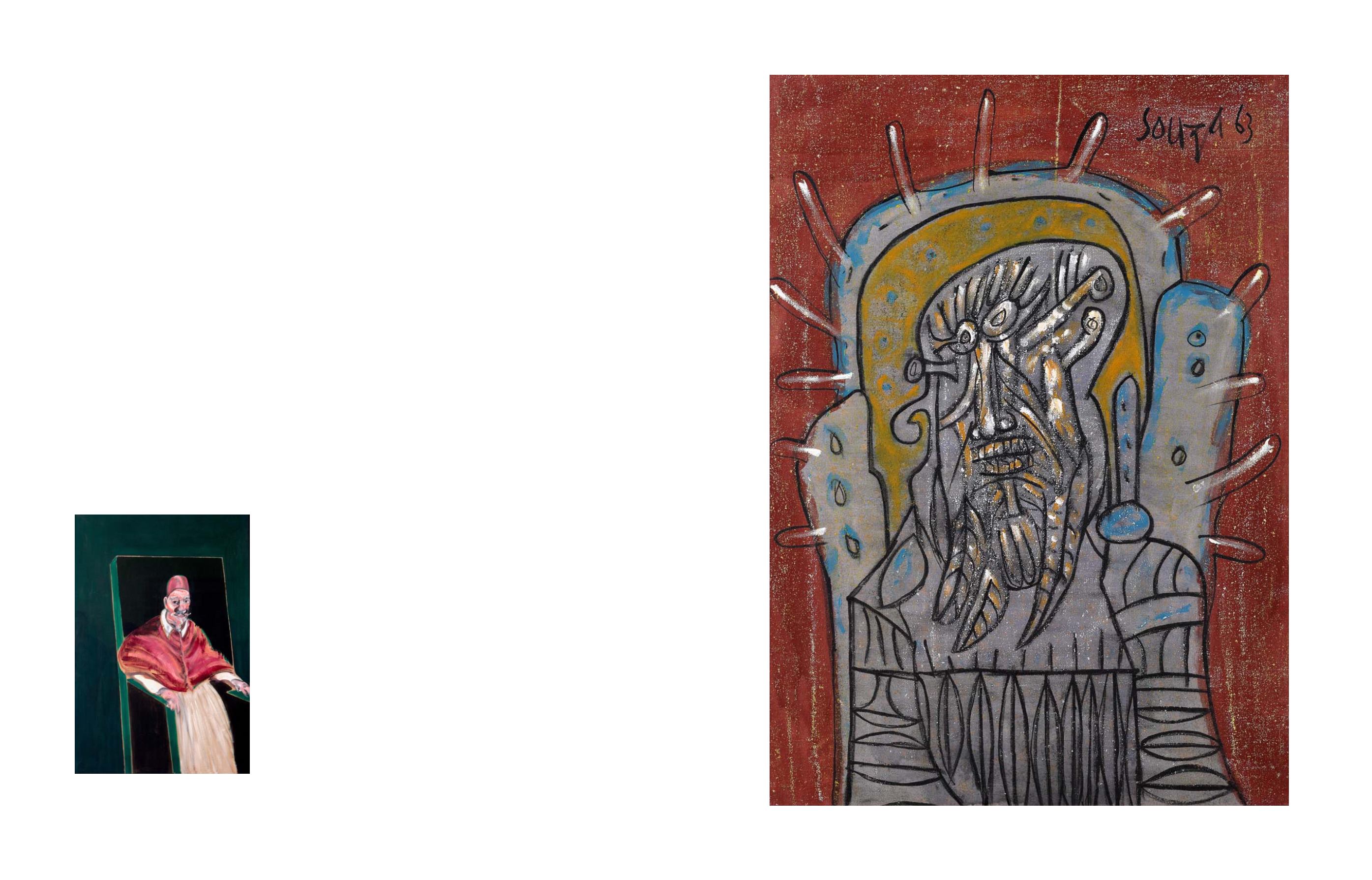

146
Saffronart | Evening Sale
“I have created a new kind of face... When you examine
the face, the morphology, I am the only artist who has
taken it a step further,” wrote Souza, whose distorted
heads and faces were powerful expressions of what he
saw as the embodiment of hypocrisy by the elite and the
clergy. The present lot was painted in 1963, at the height
of an era concerned with the Cold War and fears of a
nuclear holocaust, and consequently, the mutant face
and distortions are an expression of Souza’s personal and
political fears. In this respect, it has something in common
with Francis Bacon’s paintings of the Pope in the 1950s.
Seated in clerical garb on a throne-like seat, the tentacled,
distorted subject in the present lot is both scathing and
fearful. “The post-war angst that had inflicted the whole of
Europe and the works of artists like Francis Bacon and T S
Eliot would also draw in its fold a painter like Souza, with his
indictment of a soulless society.” (Yashodhara Dalmia,
The
Making of Modern Indian Art: The Progressives
, New Delhi:
Oxford University Press, 2001, p. 89)
52
F N SOUZA
(1924 ‒ 2002)
Untitled
Signed and dated ‘Souza 63’ (upper right)
1963
Oil on canvas
38.75 x 27.75 in (98.5 x 70.6 cm)
Rs 1,20,00,000 ‒ 1,80,00,000
$ 181,820 ‒ 272,730
PROVENANCE:
Sotheby’s, New York, 20 September 2005, lot 214
Property of a Distinguished Gentleman
Private Family Collection, Delhi
Francis Bacon painted distorted portraits of the papacy
and the clergy in the 1950s.
Contributor: Peter Horree / Alamy Stock Photo
147


















